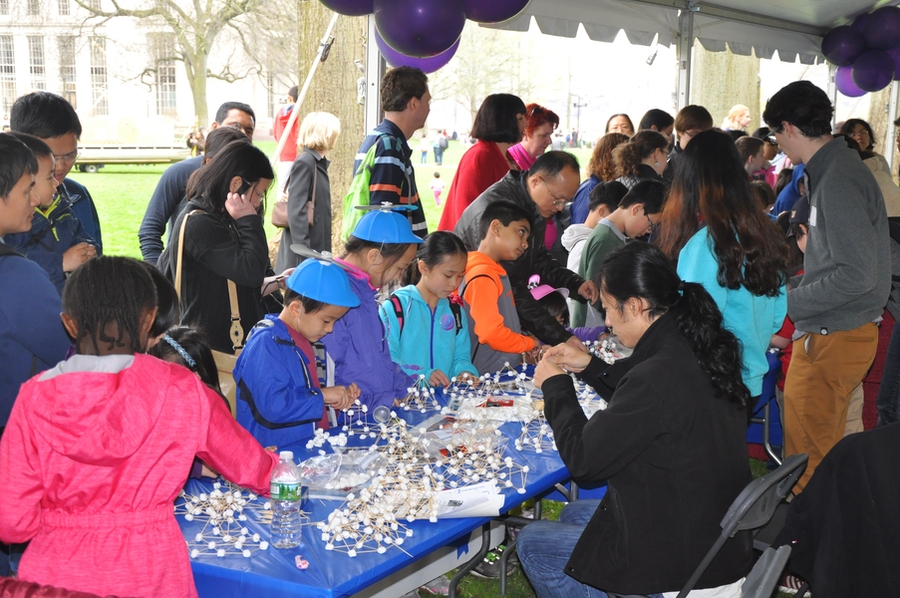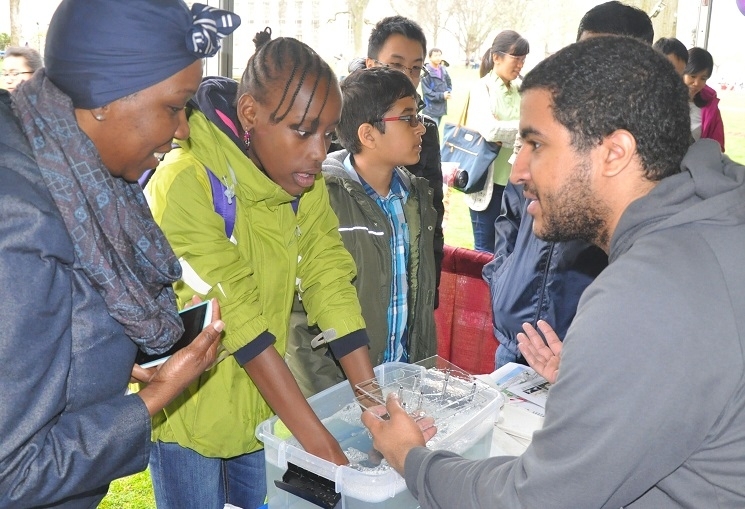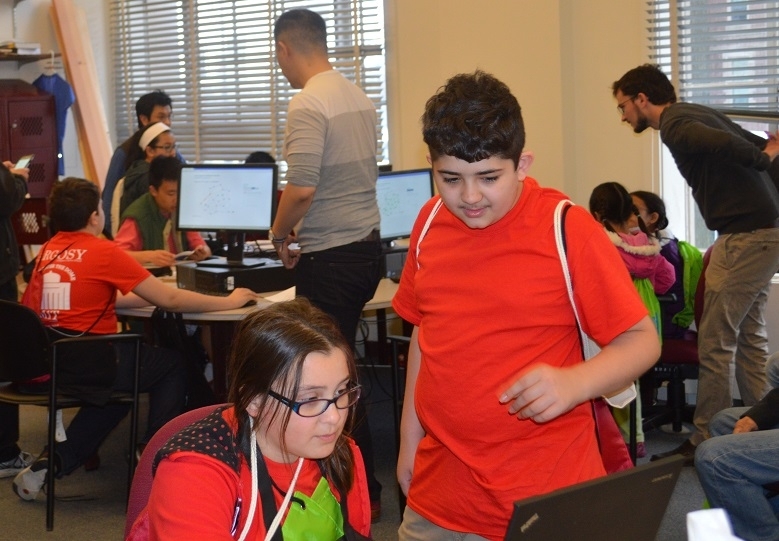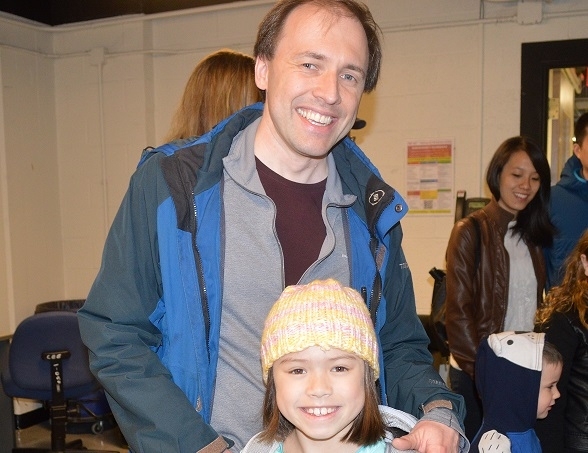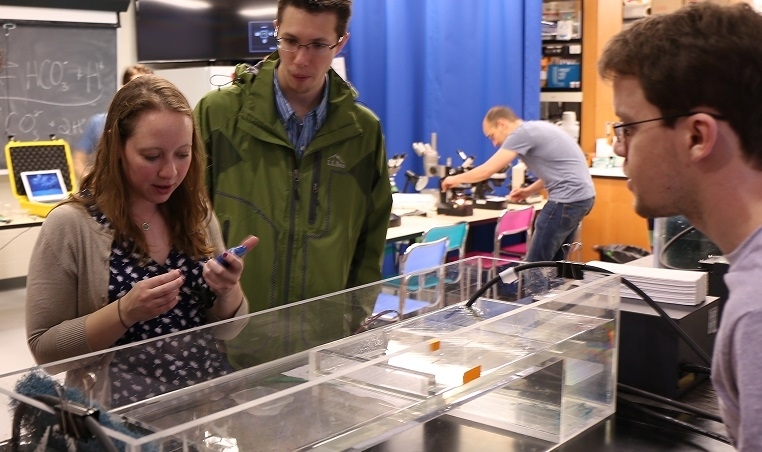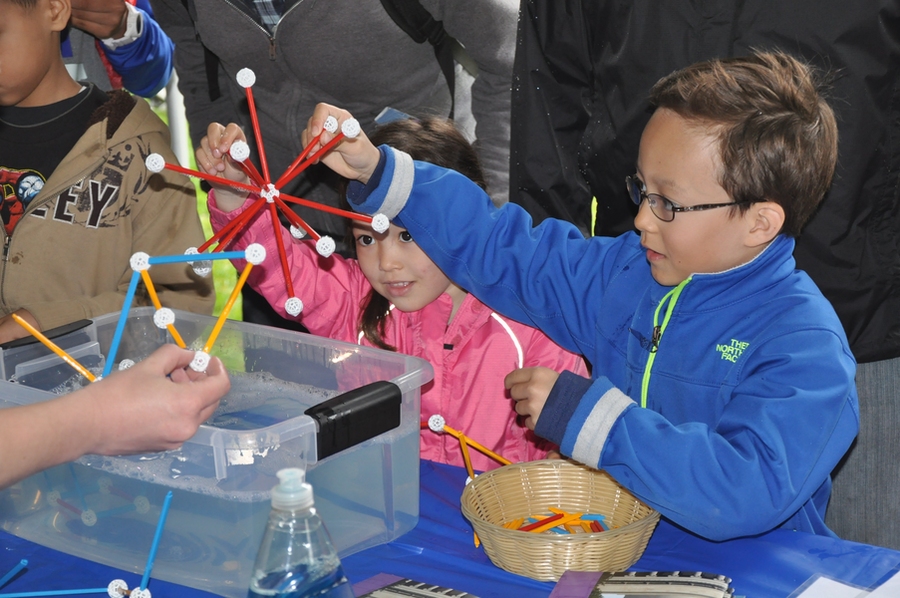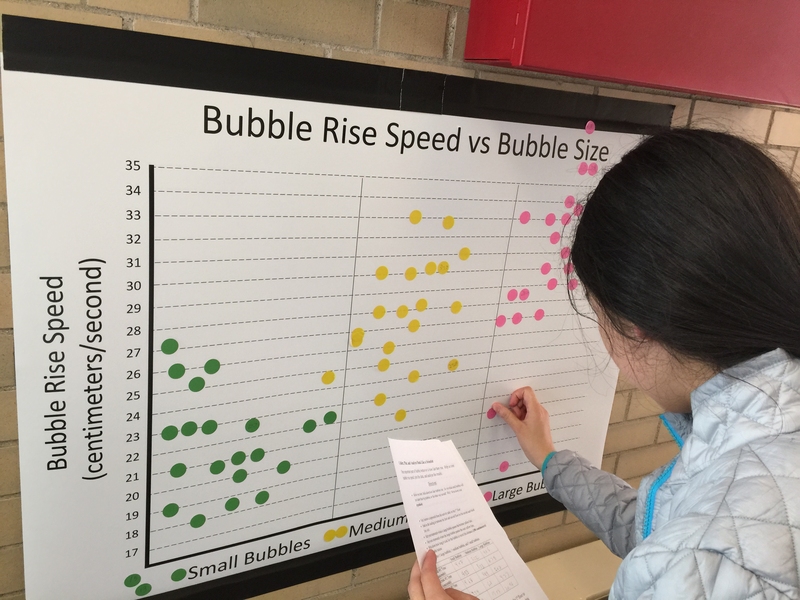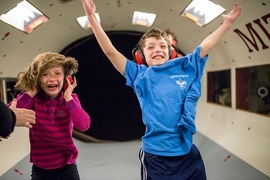Whether jostling closer to the toy building pieces, ogling liquid hair being transformed into holograms, or experimenting with “methane bubble madness,” visitors to the Department of Civil and Environmental Engineering (CEE) MIT 2016 Open House activities on April 23 got a quick inside view of new ways to solve society’s most pressing challenges.
Quick may be an overstatement, because CEE’s two labs — the Henry L. Pierce Laboratory for Infrastructure Science and Engineering and the Ralph M. Parsons Laboratory for Environmental Science and Engineering, or Buildings 1 and 48, respectively — are about a quarter of a mile apart on campus. That fact, combined with an additional half-dozen CEE activities hosted under a Killian Court tent, gave visitors quite a lot of distance to cover to preview what goes on inside the department. Fortunately, the department equipped the most intrepid explorers with a unique CEE Passport, a fun guide to all of its 14 dispersed activities including clues to win prizes.
Coming together across expanses is a recurring theme in CEE — a department and profession undergoing significant transformation.
“Now, more than ever, society needs to integrate science and engineering to scale innovation up fast — revolutionizing the ways entire cities, ecosystems, and energy and water systems work and interconnect,” said Markus J. Buehler, the McAfee Professor of Engineering and CEE head. “The fundamental understanding of how our environment works is crucial, because everything is linked. MIT civil and environmental engineering students learn this ‘big engineering’ approach and reflect it in ways they solve problems. The Open House is a good opportunity to share a glimpse of what’s possible in MIT’s unique environment, especially the creative work led by our students.”
Oh, the places you’ll go
A simple, yet effective, demonstration was a CEE table under the tent where young children built 3-D frames and then dipped them in a soapy water solution. When pulled from the bath, translucent soap films formed in the gaps in ways that minimized the film surface area due to the surface tension of the solution.
“Look at the shapes of the connecting films,” instructed grad student Elizabeth (Liz) Strong. “Now pop one. See how this changes the overall shape of the film? This is an example of how engineers can use simple models to visualize a variety of solutions to design problems that are otherwise pretty challenging to find.”
A popular demonstration with teenagers was playing security games on infrastructure networks. A group of middle schoolers in red t-shirts from the Argosy Collegiate Charter School in Fall River sat at Pierce Lab computers challenging each other to attack and defend their simulated large-scale utility network systems.
Amid cries of “gotcha,” 13-year-old Darian Payne spoke about his future aspirations. “I want someday to test computer programs and fix flaws. My friend likes to build games, but I play a lot of them and have a taste for what’s working right and what isn’t. I know I would be good at showing what’s wrong and making it better.” Systems engineering exercises like this opened some visitors’ eyes to just how far CEE extends.
Second grader Sophie McEttrick from Milton explored the “Transforming Hairs in Holograms” exhibit and learned ways Kashmir yarn can be liquefied and then used in optical devices to be scanned or projected as holograms. Grad student Jane Chui, who helped Professor Benedetto Marelli conduct the demonstration, emphasized this is just one example of ways to use regenerative natural materials like goat hair to innovate new solutions for society. Computer scientist Joe McEttrick, Sophie’s father, said he wanted to expose his daughter to all the different ways we use technology in our lives. “Her goal is to become an artist,” he explained, “but she has already built a Scratch-based snap circuits science project, so who knows how far her creativity will take her?”
Natural Intrigue
“I’m intrigued by the engineering aspects and beauty of the environmental demos,” said Lauren Bailey, a Marlboro middle school science teacher who alternately dropped a bit of dye and seeds into an urban constructed wetlands model in Parsons Lab, which showed ways to better protect some coastlines. “I’m always looking for ideas to bring into the classroom to help students think about making the world more environmentally friendly through science and engineering.”
Other eager explorers in Parsons climbed three stories of the lab’s stairwell to track simulated methane bubbles in a water tube rising to the surface. Participants tracked, collected, plotted, and analyzed bubble size data just like real scientists. Simply observing whether smaller or larger bubbles rose fastest informed these budding environmental engineers about ways greenhouse gases pollute the atmosphere. Perhaps some of them will enroll at MIT someday and join other students researching answers to mitigate climate change.
Two New England College of Optometry students dropped by for CEE Trivia and other activities, because they can see MIT from their campus across the river and thought it would be “a cool thing to do on a spring day.”
“I learned that MIT was founded in 1861 just after the Civil War,” said California-native optometry student Angela Yang. “Today you’re celebrating the anniversary of moving from Boston to Cambridge, but I didn’t realize the university is really so much older. We got that question wrong in the trivia competition, but it was a fun way to learn something new.”
At the end of the day, the Open House was a fun way to introduce everyone to what goes on in labs and classrooms every day at MIT. This accessibility to knowledge across disciplines is something very much emphasized within CEE.
“Bringing people together to learn about the work and play going on at MIT has benefits for everyone,” said Professor John Ochsendorf of CEE and the Department of Architecture, who also serves as chair of the MIT2016 Centennial Steering Committee. “We aimed to inspire the next generation of researchers and problem solvers, and we were thrilled to have so many people join us for a great day.”
